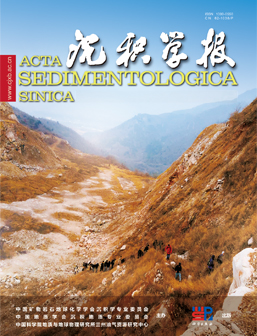Provenance characteristics and sedimentary evolution of the Jurassic in the piedmont area of southwest Tarim Basin
doi: 10.14027/j.issn.1000-0550.2025.022
- Received Date: 2025-03-20
- Available Online: 2025-09-26
-
Key words:
- Jurassic /
- provenance analysis /
- rifted lake basin /
- sedimentary evolution /
- sedimentary model /
- Tarim Basin
Abstract: [Objective] The successful breakthrough in the Jurassic of Well Fusha 8 in the piedmont area of the southwest Tarim Basin marks the emergence of a new oil-bearing series, demonstrating promising prospects for oil and gas exploration. Currently, the insufficient understanding of the provenance characteristics and sedimentary evolution of the Jurassic system has become a critical issue constraining oil and gas exploration. [Methods] Taking the Jurassic in the piedmont area of the southwest Tarim Basin as the research object, this study investigates the provenance systems, sedimentary facies types, and sedimentary evolution processes based on field outcrops, drilling data, and other relevant materials. [Results] The Jurassic were primarily sourced from the West Kunlun Mountains and the West Tianshan Mountains, with weaker contributions from the slope area. Both the Fusha and Aketao Fault Depressions developed two major provenance systems: the southern (West Kunlun Mountains) and the northern (slope area). In contrast, the Kuzigongsu Fault Depression was mainly sourced from the West Tianshan Mountains. Fourteen lithofacies and fourteen lithofacies associations were found in the Jurassic, and seven sedimentary facies types were determined. The Fusha and Aketao Fault depressions in the piedmont area of the West Kunlun Mountains underwent a evolution during the Early to Middle Jurassic, progressing from the initial rifting stage to the intense rifting stage and finally to the rift-sag transition stage. The steep slope zone in the south primarily developed alluvial fan-fan delta sedimentary systems, while the gentle slope zone in the north developed small-scale braided river deltas and fan deltas. In the Kuzigongsu Fault Depression in front of the West Tianshan Mountains, the boundary faults remained active during the Early to Middle Jurassic. The main sub-depression developed an alluvial fan-fan delta sedimentary system, while the secondary sub-depression was initially filled and leveled by alluvial fan conglomerates. In the later stage, the rifting activity expanded westward, predominantly forming braided river-meandering river deposits. During the Late Jurassic, compression and regional aridification triggered basin basement uplift and enhanced sediment supply, resulting in widespread development of alluvial fan deposits across the study area, marking the terminal stage of rifted lake basin evolution. [Conclusions] Overall, the Jurassic strata in the piedmont area of the southwestern Tarim Basin experienced a transgression during the Early to Middle Jurassic and a regression during the Middle to Late Jurassic, reflecting a multi-stage sedimentary evolution. This study not only reconstructs the filling and evolution process of the Jurassic in the southwestern Tarim Basin but also provides valuable insights for the paleogeographic reconstruction of sedimentary areas in residual basins.
| Citation: | Provenance characteristics and sedimentary evolution of the Jurassic in the piedmont area of southwest Tarim Basin[J]. Acta Sedimentologica Sinica. doi: 10.14027/j.issn.1000-0550.2025.022 |






 DownLoad:
DownLoad: